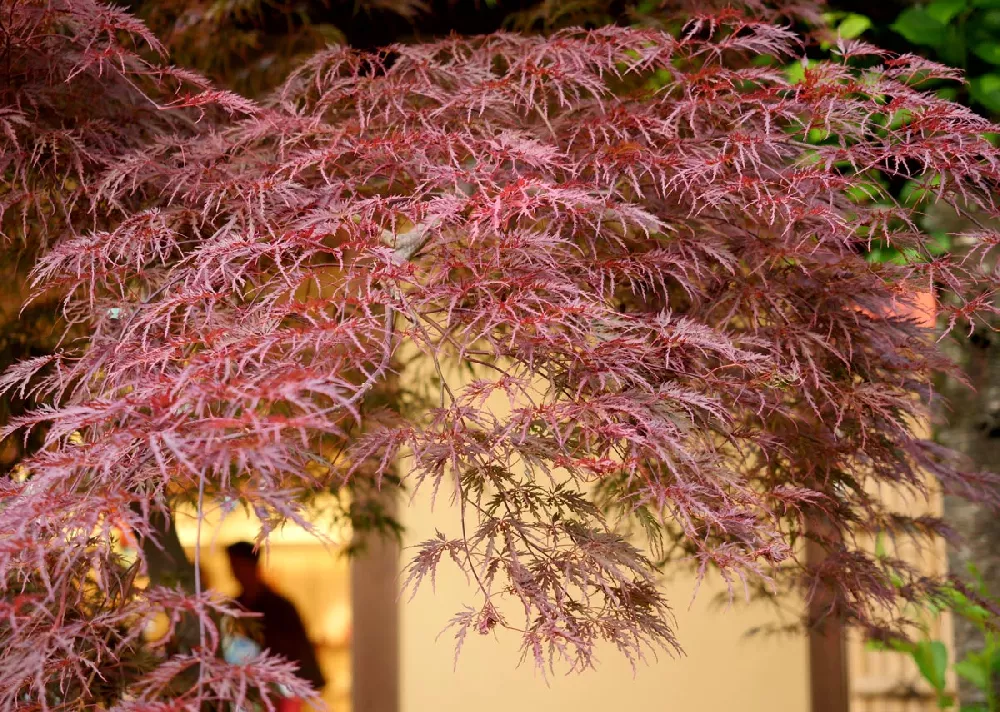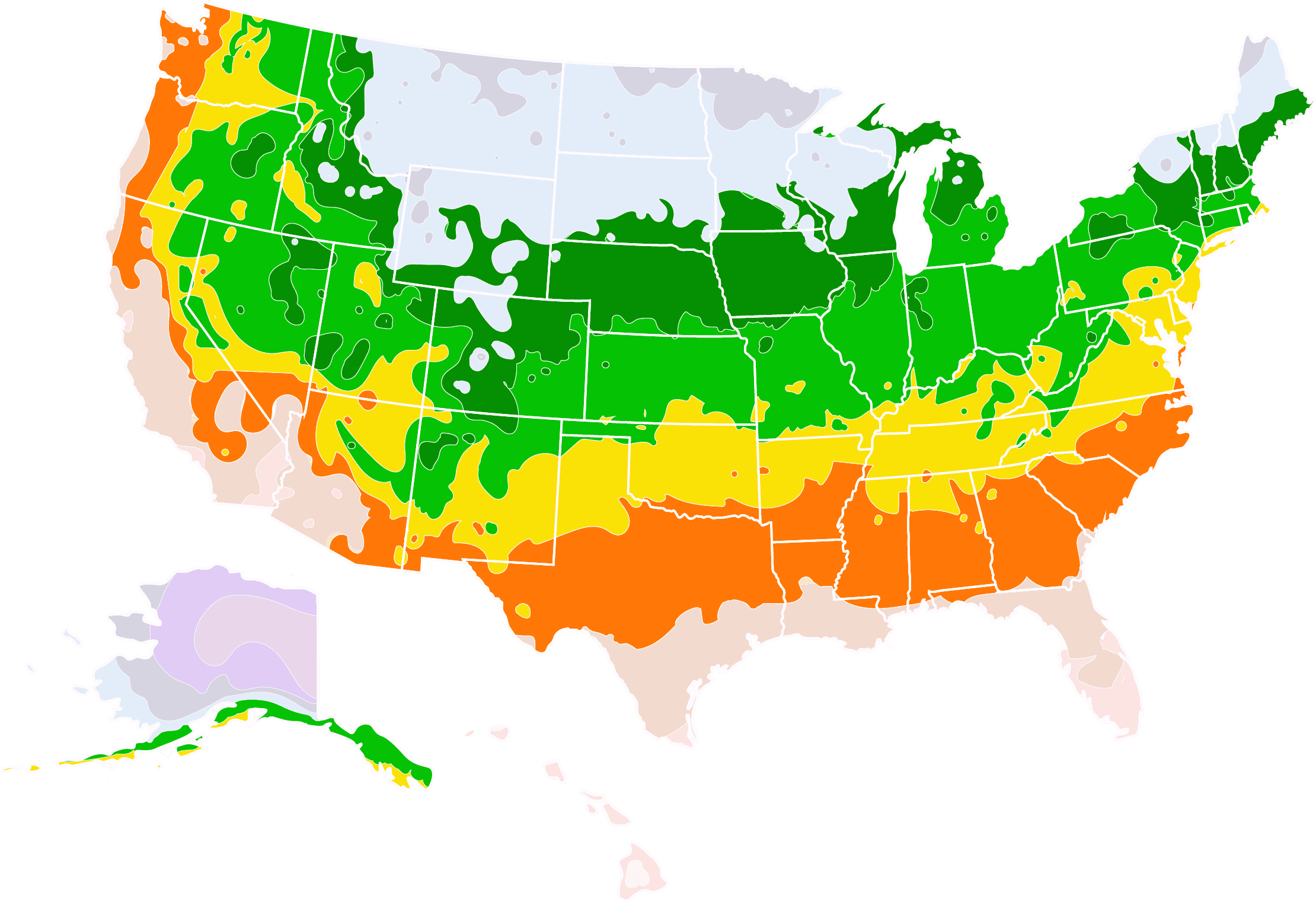- Home >
- Maple Trees >
- Weeping Japanese Maple ‘Viridis’ Tree
Weeping Japanese Maple 'Viridis' Tree for Sale - Buying & Growing Guide
- Ships in 1-2 days
- 1-Year Warranty Eligible
- Pots or accessories are not included unless specified in the product options.
Shipping Details:
Once your order is shipped, you’ll receive an email with a tracking number and estimated delivery date. Most orders ship immediately, but some items are seasonal and may only ship in spring or fall. These products are noted on the website.
Few trees can equal the Japanese maple for style and elegance, and this cultivar, Acer palmatum var. dissectum 'Viridis,' is among the best of them. It features deeply lobed bright green leaves that turn vivid colors in fall — first a golden yellow, followed by orange, then vibrant red before they drop. The branches on a mature weeping Japanese maple 'Viridis' tree are intriguingly twisted, and they add texture and interest to the winter garden. The tree is on the small side, maxing out at 6 to 8 feet in height, and it is a good choice for smaller gardens or petite urban backyards. It's low maintenance, too, needing little extra care. Here are a few more reasons to consider this Japanese maple tree for your own garden:
- The weeping Japanese maple ‘Viridis’ tree needs little pruning; it will achieve a pleasing rounded canopy naturally.
- It is an excellent understory tree that thrives in dappled or partial shade.
- Its weeping habit adds drama to Asian-inspired and cottage gardens.
Plant Care
Sunlight

Although the weeping Japanese maple tolerates full sun, you'll get the best color if it is planted in partial shade.
Watering
Water newly planted trees every few days; mature trees need little supplemental watering.
Fertilizing

Fertilize in early spring before new growth appears with a balanced, slow-release product for landscape plants.
Planting and Care
Planting instructions
Site your weeping Japanese maple tree where it will get some sun — eight hours or less a day is best — in soil that drains well and has been amended with well-rotted compost or manure. Unpot your sapling, and tease out any encircling roots, which can girdle the tree and slowly kill it. Dig a hole that’s as deep as the root ball and twice as wide. Place the sapling in the hole, spreading out the roots. Holding the plant upright and steady, fill in around it with topsoil that has had compost or manure added to it, tamping down as you go to eliminate air pockets. Water thoroughly. Apply a 2- to 3-inch layer of an organic mulch, such as bark chips, around the tree’s root zone to conserve moisture and hinder weed growth.
Watering and nutrients
Your weeping Japanese maple tree needs frequent watering when it is newly planted — several times a week, or whenever the soil is dry 2 inches below the surface. After the first year, you can cut back on supplemental watering, limiting it to times when you are experiencing drought-like conditions. Water at the root zone, preferably in the early morning. Fertilize with a balanced, slow-release product in early spring before new growth starts. Use a fertilizer that is designed for landscape trees and shrubs.
Pollination
Japanese maple trees produce small reddish flowers that, if pollinated by insects such as bees, are followed by green samaras — the seed pods often called “helicopters” — which are released in the fall and travel by way of the wind. Hybrid varieties of Japanese Maple, however, rarely produce true to type and must be cloned or root-propagated.
Pruning
The main pruning task you will have with your weeping Japanese maple tree is trimming out any dead, diseased, or damaged limbs whenever you see them. No other pruning is required, although you can do some light shaping in late winter if you wish.
Pests and diseases
The most common pest of the weeping Japanese maple tree is the Japanese beetle. You may also see signs of scale insects, aphids, and mites on your tree. Keeping your tree healthy and well-watered will help it to fight off infestations. Often, a strong blast from a hose can get rid of insects. Another option is to release beneficial insects, such as ladybugs, which eat aphids. Diseases of the Japanese maple tree include cankers, which can get a foothold if the bark of the tree has been damaged in some way, and verticillium wilt, a fungal disease. Trim out branches where the leaves have wilted or died, and keep the area around the base of the tree free of debris to deter both disease and pests.
Achieving maximum results
Although Japanese maple trees are generally not difficult trees to grow, a little pampering when they are young can help you set your tree up for a successful life. When siting your tree, consider the quality of sunlight that the spot receives. If it is prone to hot afternoon sun, it might not be the best choice for your Japanese maple. The tree will also benefit if it is planted away from prevailing winds and is in a spot that is protected from late spring frosts. Japanese maple trees don’t like salty soil, so if your roads are kept clear of snow in the winter with salt spray, avoid planting your maple near the road. When your tree is young, it is also susceptible to frost damage, so if you are anticipating a late frost after the tree has begun to leaf out, consider covering it with agricultural fabric or even a blanket.
FAQs
Where can I grow a weeping Japanese maple tree?
How big does a weeping Japanese maple tree get?
The weeping Japanese maple 'Viridis' tree has a mature height of 6 to 8 feet and a mature width of 6 to 10 feet. Consider both height and width when planting. Keep it at least 5 to 6 feet away from your home or any other structures so it has room to grow. This tree has a slow rate of growth, so it may take several decades to reach its full size.
How is a weeping Japanese maple tree best used in my garden?
This tree is a splendid specimen tree, and it can look wonderful when surrounded by smaller shrubs or perennials in a focal point in your front yard. It is, of course, a natural in Asian-inspired or rock gardens. You can also showcase its attractive form by planting it near a pond or other body of water. Your weeping Japanese maple can be grown in a large container, although it will probably remain smaller in stature than those grown in the ground.
Compare Similar Products
You can't add more Product Name - Product size to the cart.
OK









